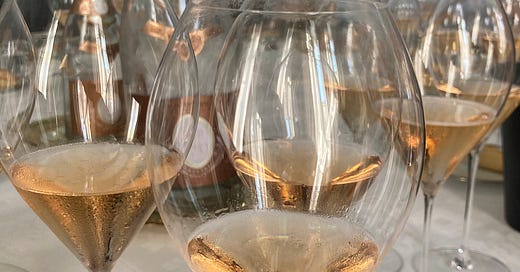Dry January remains a very contentious topic, especially in the wine world, where this popular start of the year ritual is too often vilified. The strong rebuke of the concept may appear baffling, seeing January really is the detox, get fit, change your life and lose weight boot camp training month. At the start of the new year, it is only human to strive for a better, healthier life; the French even have it as part of their standard new year wish: Bonne Année; bonne santé (Happy New Year and good health). So, what makes dry January such a “dirty’ phrase in the wine world? Is it because it makes us realize that our drinking habits are completely off kilter compared to standard drink recommendations? Or do we believe that the dry January challenge is out to erode the wine world? Or maybe it reminds us, that despite all of our denying, that alcohol is a health risk, and wine contains alcohol.
The wine world’s relationship with alcohol is just as ambivalent as its dry January aversion. A wine’s alcoholic degree has often been considered as a quality marker, with many appellations requiring a minimum alcohol degree. The idea behind this thinking is that a higher alcohol level implies greater ripeness, resulting in more complexity and a better aging potential. However, as global warming has caused the average alcohol degrees of wines to creep up, especially for red wine, consumers have gradually grown wary of high alcohol wine, which many may label as overbearing or too hot. A change in wine consumption habits has uncoupled drinking from eating, and without food to counterbalance it, the higher alcohol degree has become more apparent and cumbersome.
Traditionally, in European wine-making countries such as France, Italy, Portugal, Greece and Spain, wine was an integral part of life. It was consumed, often abundantly, in a family context at the dinner table. It is therefore still today considered as being an integral part of the Mediterranean diet, however scientists have since reviewed the recommended quantity.
However, as wine production branched out globally, so did its consumption. A 2014 study on wine identity in the Journal of Consumer Culture, posits that there is a strong divergence in the per capita wine consumption between 1950 and 2010 in Western countries. It decreased dramatically in the traditional wine-producing and wine-consuming countries like France, Italy and Spain, whereas it strongly increased in northern and central Europe, the United Kingdom and the US. In this new context, drinking wine was not so much part of the meal experience anymore, instead, according to the same study it became a way to abate the “insecurity of a status-conscious consumer who is pursuing a distinctive lifestyle and identity, based on a certain socio-economic position”. In other words, drinking wine became a ‘lifestyle’ choice and drinking a lot of it implied that one could afford it and confirmed one’s worthiness. This was further exacerbated with the rise of social media which allowed for the creation of sub cultural groups such as “Wine Moms”, “Wine Lovers” or “Wine Geeks’, all of which encouraged potentially excessive consumption of wine because it is the “cool, trendy, or even sophisticated” beverage choice for people to relax.
Moreover, it seems that since the beginning of the 21th century, wine producers have wanted to capitalize on this new wine lifestyle, creating tailor made cuvees as a marketing strategy to expand their production. A champagne example of this can be seen in the boosting of demi-sec cuvees, to be consumed with specifically flavored ice cubes last decade, or the “brut nature” and single vineyard trend since 2020. Even the Champagne des Vignerons campaign, which aimed to decomplexify the beverage to reach a wider audience, has been firmly rooted in the wine lifestyle concept.
Ironically, the explosion in wine consumption of the 21st century coincided, and maybe even encouraged, an ever-growing body of research pointing out the potential health and societal dangers linked to excessive alcohol consumption. The most recent studies have gone as far as negating the health benefits of (red) wine, something that had long been an established fact in medical circles. By the end of 2022, this resulted in the World Health Organization (WHO) replacing its “moderate red wine consumption may be beneficial to health” mantra with “no level of alcohol consumption is safe for our health”. The news story published on the WHO European website adds “It is the alcohol that causes harm, not the beverage” and more pointedly “Risks start from the first drop.” It adds that the research so far has not been able to prove that the “potential beneficial effects of light and moderate drinking on cardiovascular diseases and type 2 diabetes outweigh the cancer risk associated with these same levels of alcohol consumption for individual consumers.” Moreover, it seems the “potential beneficial effects” are greater for older adults, while the potential risks further increase for younger drinkers.
Keep reading with a 7-day free trial
Subscribe to Terroir Champagne to keep reading this post and get 7 days of free access to the full post archives.




